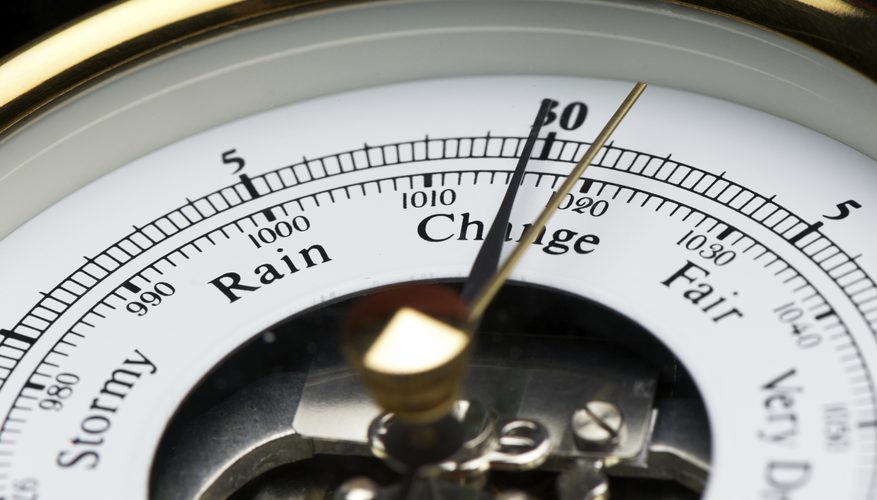
At the Bottom of a Sea
We have no problem knowing that we are surrounded by air. We breathe it, and we feel the force of wind blowing against us when outside in a windstorm. Winds in storms can do great damage. Thus, the direct evidence that we are surrounded by air is something we experience. What are its properties? And what can it do?
Let's Make An Interesting Observation
I bought a 1-gallon metal can. After taking off the cap and pouring about 200 mL of water into the can, I placed it onto an electric stove heating element, which was set on high. After a few minutes, I could hear the water boiling inside.
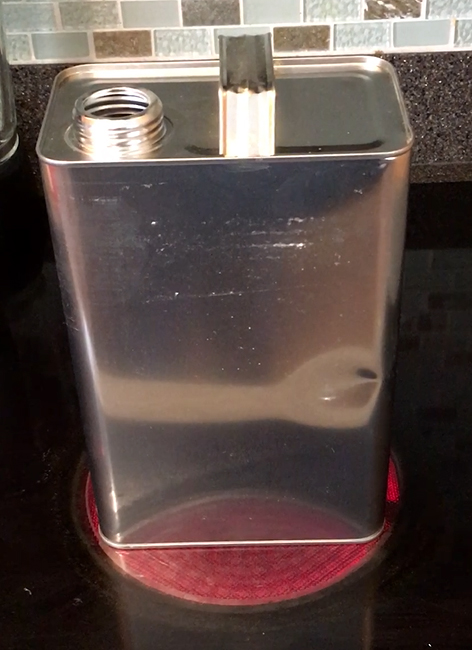
The can was left on the heating element until steam was heard rushing out of the opening at the top. I placed insulated gloves on my hands and quickly removed the can from the stove; then I screwed the cap back on, making sure it was tight.
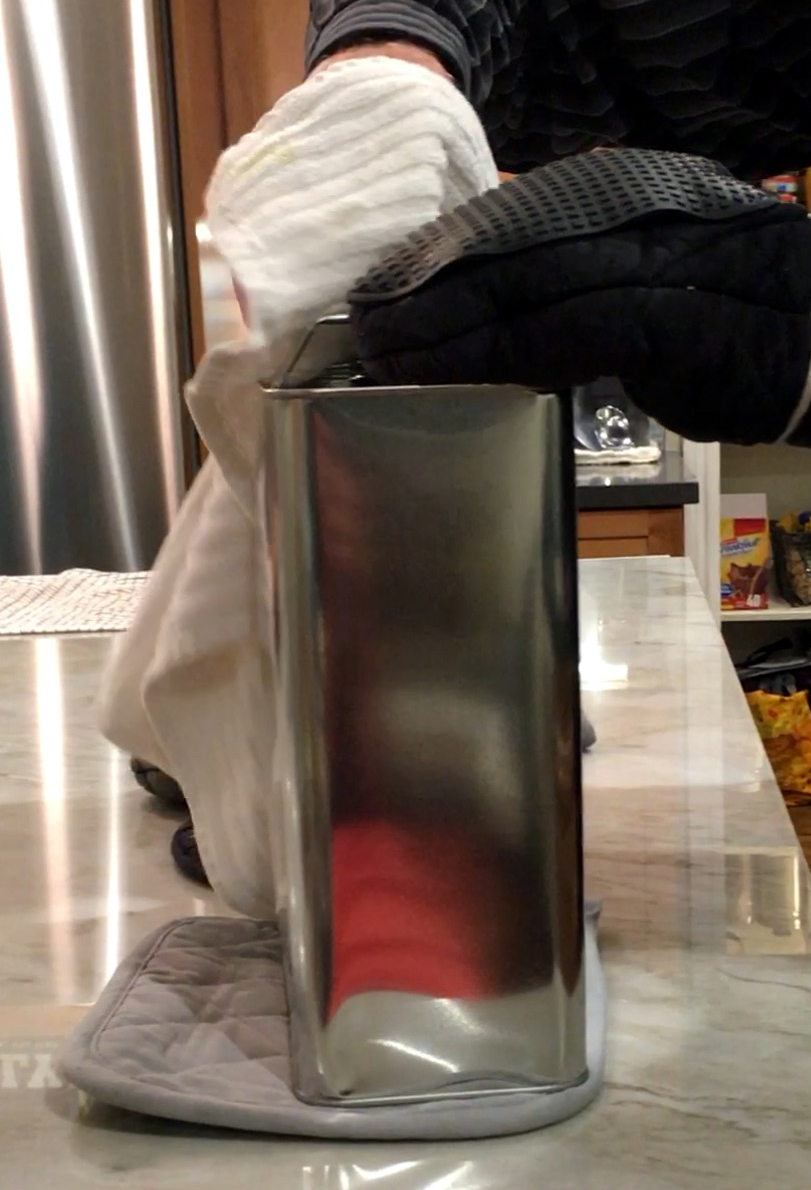
Then, I stood back and watched the container. After a few minutes, I could hear the metal creaking and see the container surfaces being pushed inward.
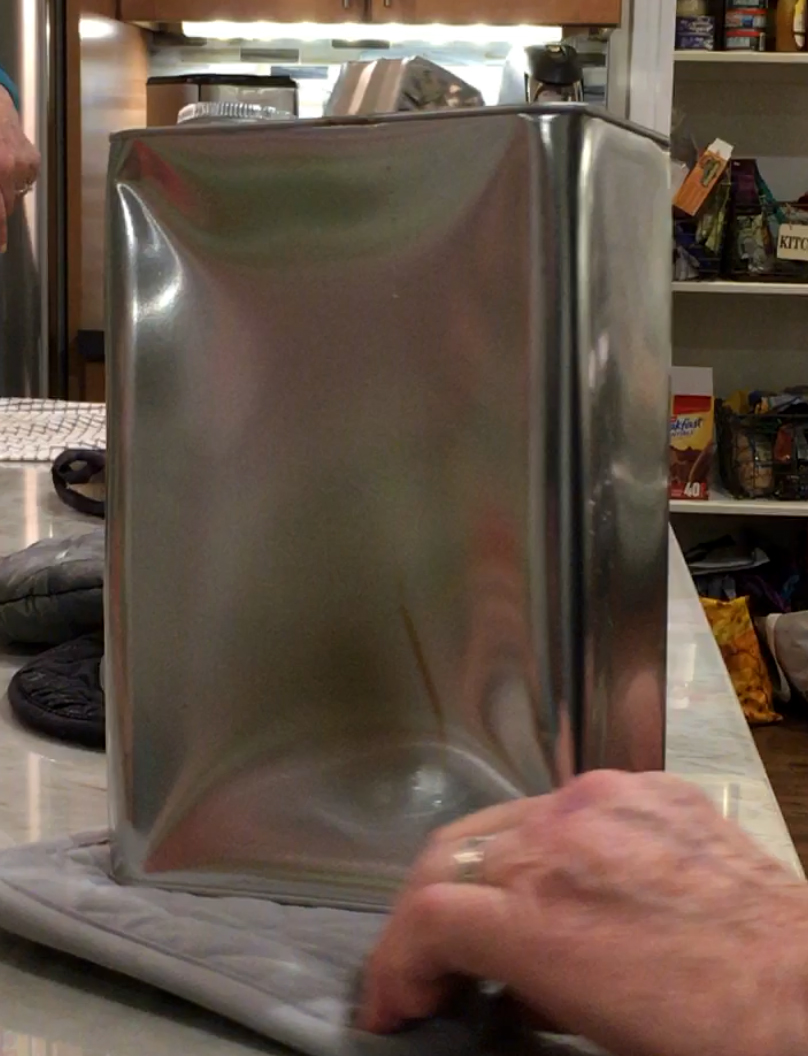
After a minute or two, the entire container became squashed as though having been crushed by some powerful force.
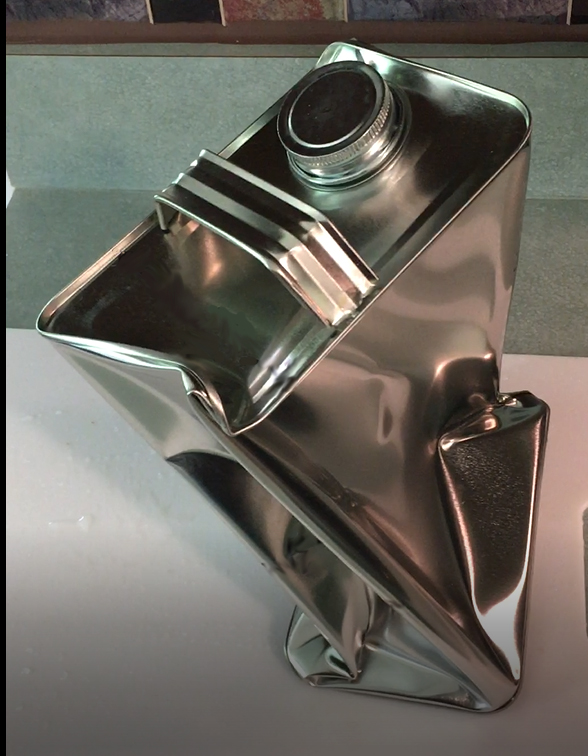
What Happened to the Can?
I heated some water inside the can until it boiled and steam was rushing out of the opening at the top. When I took the can off the stove, I screwed the cap back onto the can tightly. Nothing could then enter or leave the can.
As I waited, I saw the can begin to collapse, first the sides being bent inward, and finally the whole can crushed. But what was happening inside the can?
When no longer being heated, the can began to cool. The steam inside the can began to condense. When all the steam in the can condensed back into water, the only thing inside the can was water. But where was the air that was in the can before the water was boiled?
As the water boiled, the hot air inside the can was expelled through the top, and water molecules replaced the air. By the time the steam was rushing through the opening at the top of the can, there was nothing inside but water vapor. There was no air. With the lid screwed tightly on, and the can cooling, no air could get back into the can.
So Why Did the Can Collapse?
After the cap was put back on, there was nothing but a little water in the can. But the can was sitting in a sea of air. That air has weight, and we know that a column of air one inch x one inch, and the height of Earth's atmosphere, weighs about 14.7 lb. The air pressure is about 14.7 lb/sq in.
The can had no air inside to push back against the atmospheric pressure, so the can was crushed. But how much force was there?
This gallon can had dimensions of 6 inches x 9 inches x 4 inches. Each of the two 6 in x 9 in surfaces has a surface area of 54 square inches. So those two surfaces total 108 square inches. Each of the two 9 in x 4 in surfaces has a surface area of 36 square inches. So those two surfaces total 72 square inches. Finally, each of the two 4 inch x 6 inch surfaces has an area of 24 square inches, for a total of those two being 48 square inches. The total surface area of the can has to be the total on these surfaces, or 228 square inches.
So if there is an atmospheric pressure of 14.7 lb/square inches pushing the surface of the can, and that surface has 228 square inches, what is the total force crushing the can? Three thousand three hundred fifty two pounds of force!
Something Else Happened
After the can was crushed, I could hear water boiling in the can. How could that be? But listen for yourself.
Easier Demonstration
Take an aluminum soft-drink can that had been opened and emptied. Put a small amount of water into the can, put it on a stove heating element, and let the water boil enough for steam to rush out of the opening.
Now place water about an inch deep in a bowl and set it down on the table. Remove the can with steam coming out, but be sure to use large tongs, so you do not touch the hot can.
Quickly turn it over and rapidly place the top of the can down into the water in the bowl. The can will immediately be crushed totally! It is a bit too fast to enjoy. In this case, the pressure on the can crushes it even before the can has time to bring water from the bowl up inside, which you might expect.
Atmospheric Pressure and the Boiling Point of Water
You already know that if you live in Denver, or up in the mountains where the altitude is even higher, water boils at a lower temperature. This is the same property that we see in the extreme case above, where the pressure inside the can is almost zero.
But to boil eggs in Denver or in the mountains takes a lot longer because the temperature of the water is much lower.
What About Complaints that Weather Changes Cause Pain in Joints?
Suppose you have problems with knee joints, and when the weather changes, you start to feel pain. How can atmospheric pressure have anything to do with that?
It is not unusual for the barometric pressure to change by 0.6 lb/square inches in one day, with a front coming through. That does not seem to be much pressure. But consider the surface around a person's knee. It would be about 5 inches by 5 inches, or 25 square inches. The change in force on the knee would be 15 lb. If it had been an increase in pressure, it would be like a weight of 15 lb on your knee.